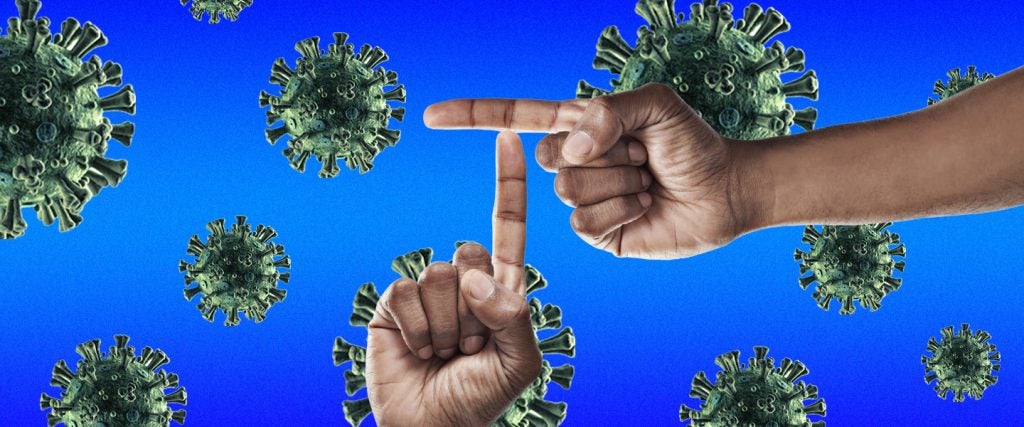As opposed to the standard good news/bad news, let’s start off with some old news/new news. First, the old news: A large body of research suggests your index-to-ring finger ratio is a biomarker for how much testosterone you were exposed to while developing in the womb. Now, the new news: According to a recent study, this could also impact how bad a case of COVID-19 you get.
Ever since the pandemic hit, there’s been conflicting evidence on testosterone’s relationship with the coronavirus: Some data suggests that high levels of the sex hormone can make a person more likely to experience severe COVID symptoms and complications; other research links lower levels of testosterone with a worse prognosis.
For better clarity, researchers looked at the finger ratios of 28 men and 26 women who were hospitalized with COVID. They found that both men and women with shorter or more “feminized” ring fingers relative to their other fingers tended to experience more severe symptoms. Further, they discovered that people who had size differences between their left and right hands had a significantly higher risk of complications and hospitalization (particularly if the right hand is the larger of the two).
“Our findings suggest that COVID-19 severity is related to low testosterone and possibly high estrogen in both men and women,” study co-author John Manning, a research fellow and professor of sport and exercise science at Swansea University in Wales, said in a press release. He added that this may shed further light on why the most at-risk group for COVID is elderly males, since testosterone starts to decline around the age of 30 and bottoms out in your 70s and 80s.
“This is significant because if it’s possible to identify more precisely who is likely to be prone to severe COVID-19, this would help in targeting vaccination,” Manning continued, stressing that the right-hand/left-hand differential is particularly concerning and in need of further research.
Consistent with the conflicting research about testosterone and COVID-19 risk, Manning and his colleagues point out that there are currently several clinical trials for anti-androgen (or anti-testosterone) drugs to treat the virus, as well as a growing interest in using testosterone as an antiviral drug. “Our research … may bring us closer to improving the repertoire of antiviral drugs, helping to shorten hospital stays and reduce mortality rates,” Manning said, admitting that “the sample is small but ongoing work has increased the sample. We hope to report further results shortly.”
It’s worth noting that these finger ratios are largely determined by hormonal exposure in the womb, rather than current testosterone levels that may be boosted in natural ways through things like diet, exercise and sex. So immediately increasing your testosterone intake isn’t going to somehow magically change the ratio of your fingers or to protect you from COVID.
That said, there’s nothing wrong with keeping them crossed, just in case.

